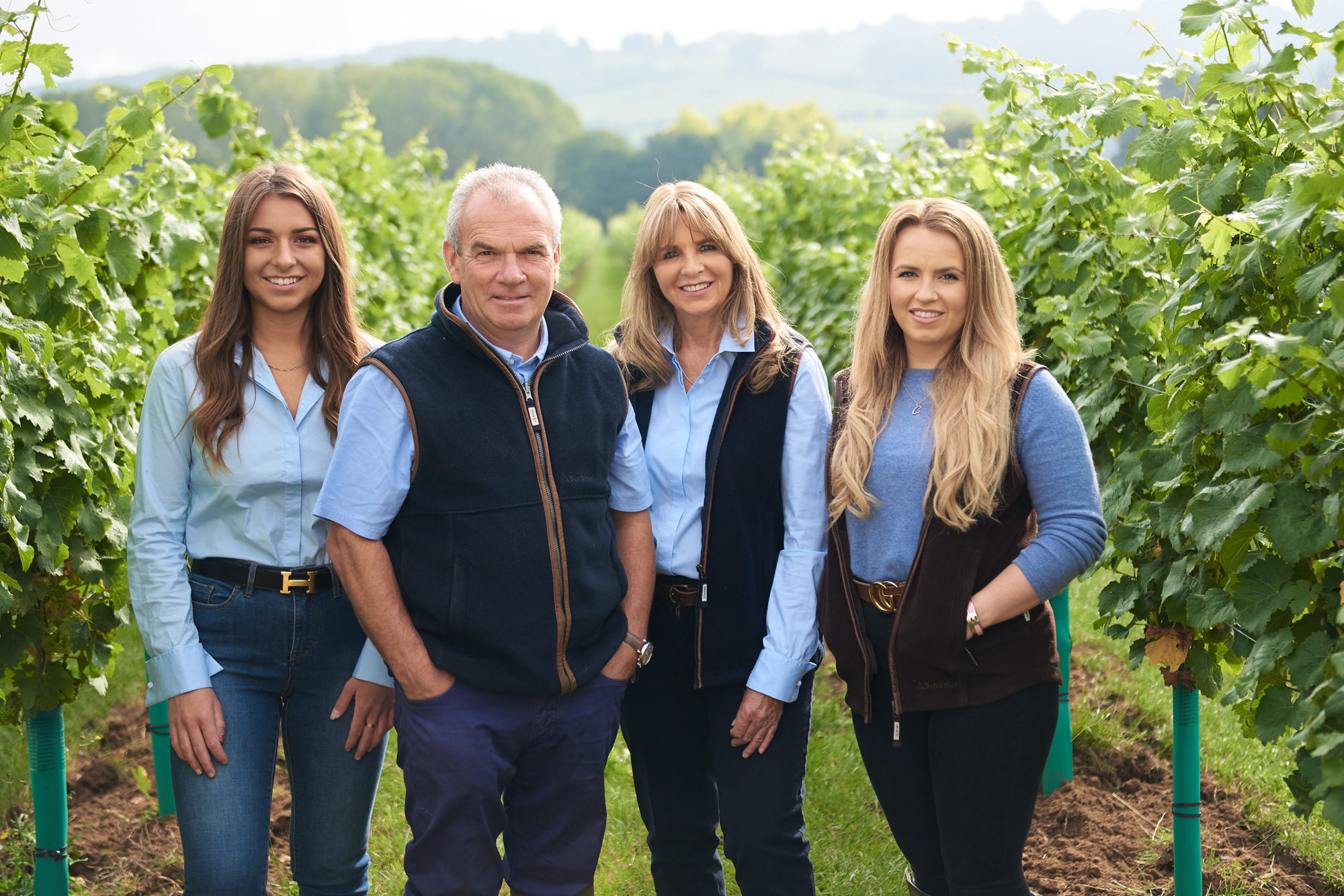
When conjuring up images of Wiltshire, I think of the cathedral city of Salisbury; the bleak but strangely beautiful Salisbury Plain; the historic towns of Devizes and Marlborough; Stonehenge, and maybe even Swindon. I don’t really think of vineyards. Yet there is scarcely a county in our green and pleasant land uncolonised by vines these days. By my reckoning, there are currently six vineyards in Wiltshire, the oldest being Bow in the Cloud, who first planted vines in 1993. Less wet than Somerset, and warmer than Dorset, the county is in ideal winegrowing country.
‘Chalk and Cheese’ is how the owner of Whitehall Vineyard, Peter Self, describes Wiltshire. This label was coined to describe the combination of chalk and dairy pasture in this rural county. Sandwiched between Somerset to the west, Berkshire and Hampshire to the east, Gloucestershire to the north and Dorset to the south, Wiltshire lies in the eastern part of Thomas Hardy’s fictionalized Wessex. ‘Wessex’, though, is a convenient term adopted by central southern English vineyards for their region’s Association.
Peter, part of the new breed of vineyard owners in the region, is a farmer by trade. He cultivates 500 acres and also runs successful garden centres alongside his vineyard. It was serendipitous that the land he owned was suitable for planting vines. After an English Wine awards tasting he was so impressed with what he drank, that is exactly what he did. Situated in the Avon Valley on limestone, Whitehall is south of the Wiltshire Downs, and that shelters the vines from the worst of the weather. That has not stopped the relentless spring frosts of 2021 from disrupting Peter’s sleep and causing undue stress, however. He estimates that he has had to use his ‘tow and blow’ fan and his supply of bougies on 15 nights so far. To date, he has not recorded any damage, but there are still one or two cold, clear nights to come.
Peter planted Bacchus, Chardonnay, Pinot Noir, Pinot Meunier and Rondo initially which would suggest that he would make an equal amount of sparkling and still wine. However, the vineyard largely turns out stills with a little sparkling on the side. Peter told me that decision was purely down to the quicker return on still wines and the fact that with sparkling you have about four years’ worth of stock before you can sell it. An indication of the bias towards still wines is the fact that, on top of the 16,000 vines already in the ground, he is planting more Bacchus vines to make more of his current best-seller. With the growth in output increasing rapidly year-on-year (4000 bottles in 2018, 16,000 in 2019 and 25,000 in 2020), Peter is likely to have his hands full in the next year or two. With increasing sales may come the opportunity to appoint a full-time vineyard manager and someone to take on the marketing from his two willing but overworked daughters. There are no plans at the moment to build a winery, with the winemaking duties currently held by established Gloucestershire vineyard, Three Choirs.

Of the three white wines Peter sent me to taste, the most impressive was the Bacchus 2019. This has an appealing earthiness and purity with aromas of cut grass, cucumber and hedgerow notes on the nose. On the palate there are flavours of salty celery, gooseberry, elderflower and a floral sweetness, even though it finishes dry. This is indubitably an old-style Bacchus with plenty of the typical fresh aromatics that one would expect from this style, as opposed to the newer iterations which tend to have tropical fruit notes. The 2019 Charlotte May Rosé is also impressively clean and toothsome. On the attractive nose there are aromas of strawberry, roses and rosewater. The palate is a winner with its dry (but not tart) flavours of raspberries and redcurrants. There is also a pleasing dash of lemon acidity on the finish. Peter is rightly proud of his reds, of which I tasted the Pinot Noir 2018 and Nethercote Hill 2018 (a blend of Pinot Noir and Rondo). The Nethercote Hill has plenty of body from the Rondo but also delicacy from the Pinot Noir. After a nose of blackberry, raspberry and tobacco, there are flavours of ripe forest fruits, cooked plum flavours (a characteristic of Rondo, I find) and a pleasant pinch of allspice. The star of the show, however, is the Pinot Noir 2018. Hinting at an almost Burgundian complexity, this is a lovely, savoury red with excellent typicity. There are classic aromas of cherry, mushroom and truffle and, on the palate, delightful notes of raspberry, vanilla and a touch of earthy flavour. This wine was oaked but Peter tells me that the slightly less oaked 2019 version is even better.
I greatly enjoyed talking to Peter through the medium of the now inevitable Zoom. But it was tantalising to hear the songs and calls of birds coming over the ether from Lacock into my dining room. Whitehall is clearly not just in a beautiful setting but is wildlife-friendly too; I detected the alarm call of a Yellow Wagtail coming from Peter’s farm. To have this declining summer migrant on one’s land is undoubtedly a sign of good husbandry and land use. I look forward to visiting Whitehall to do a spot of birdwatching and, of course taste the wines, in the not too distant future.

All photos with thanks to Whitehall Vineyard



